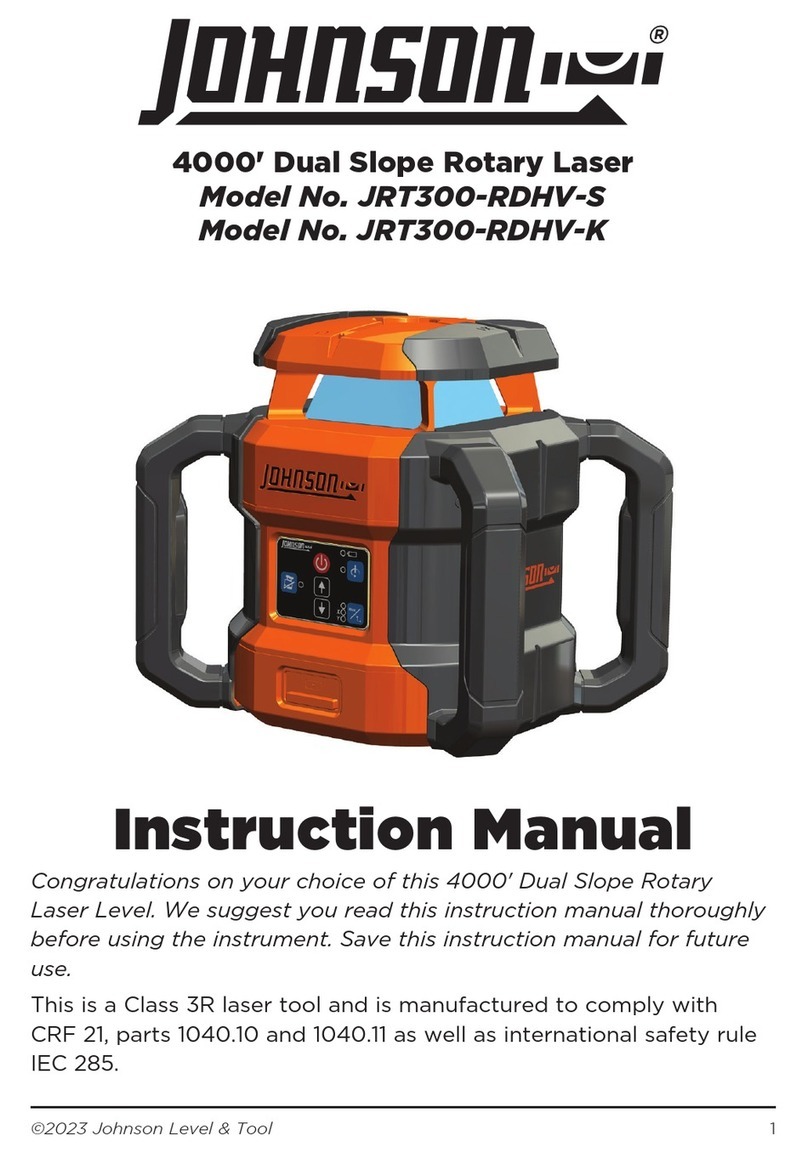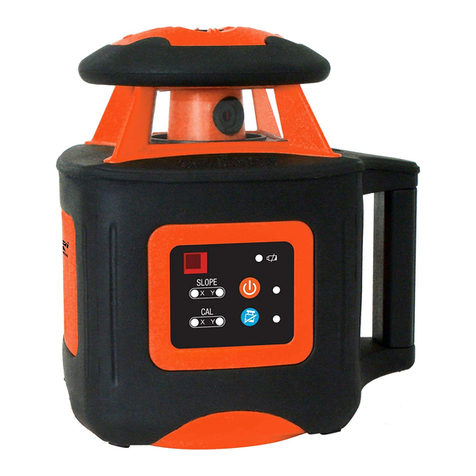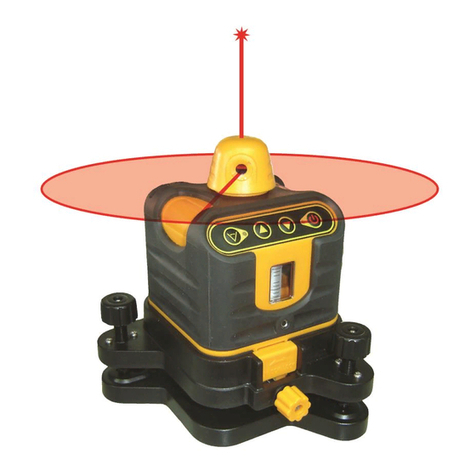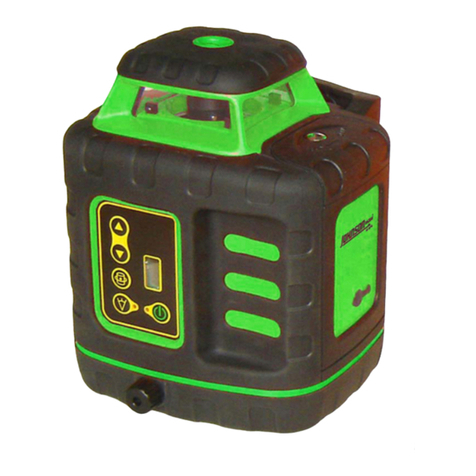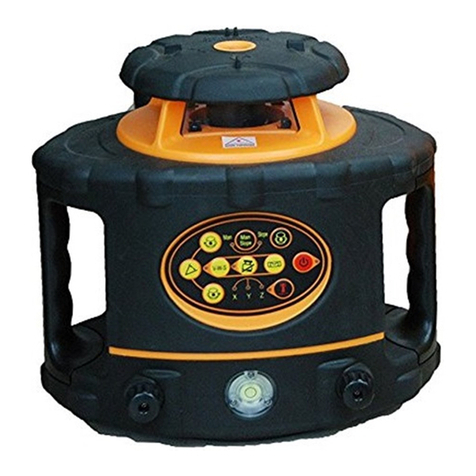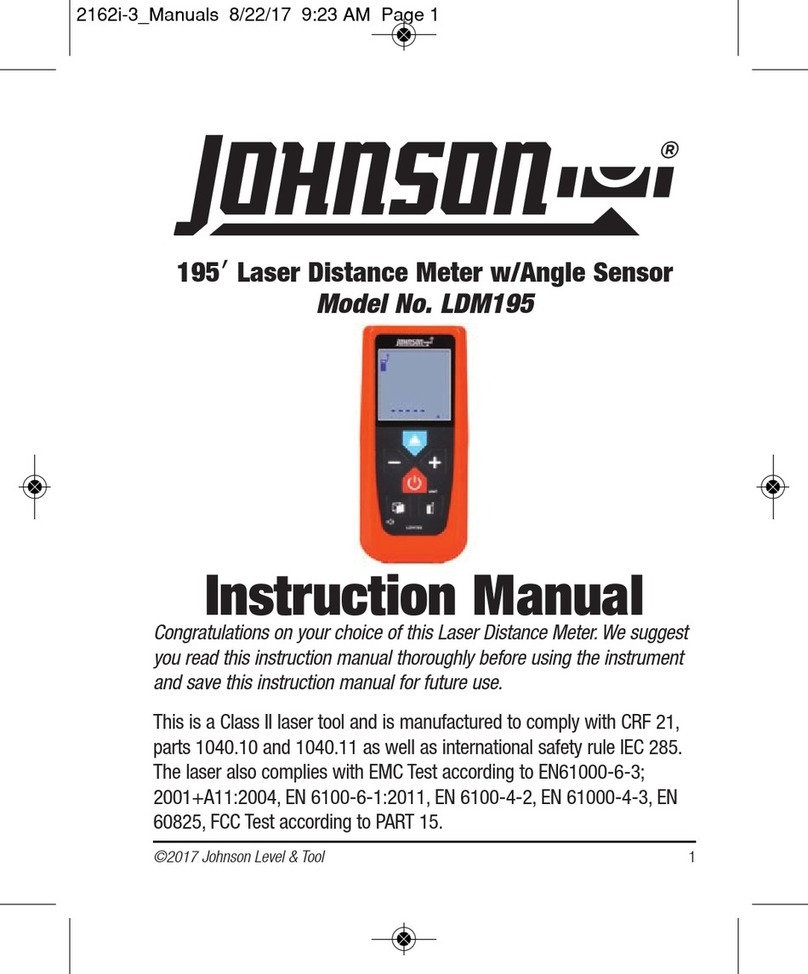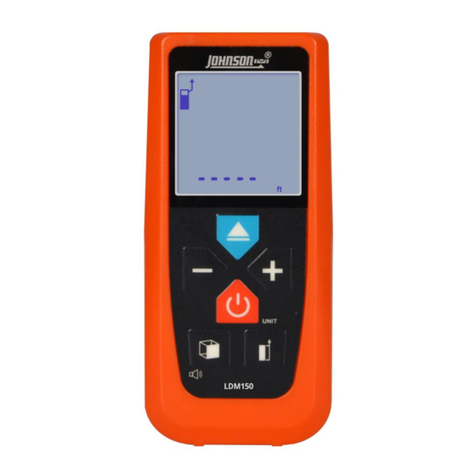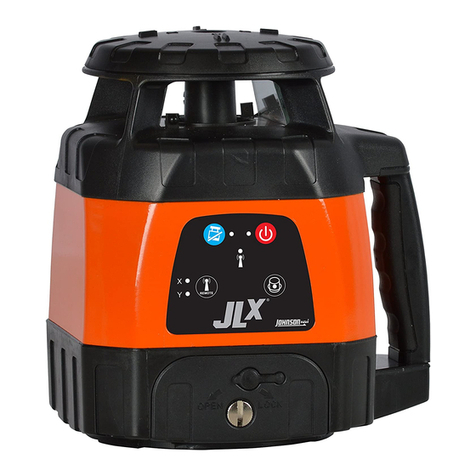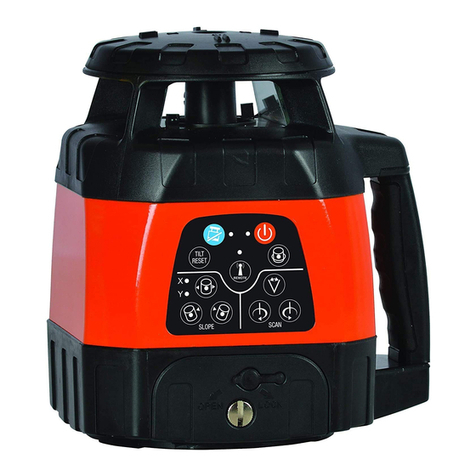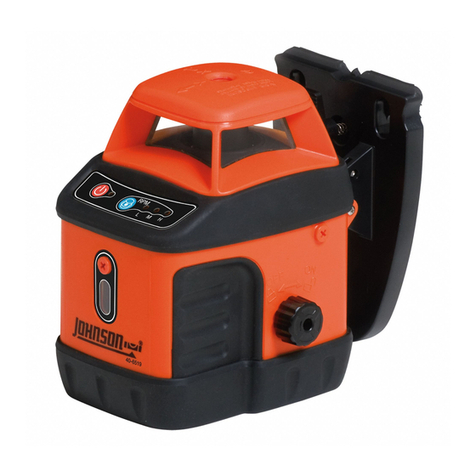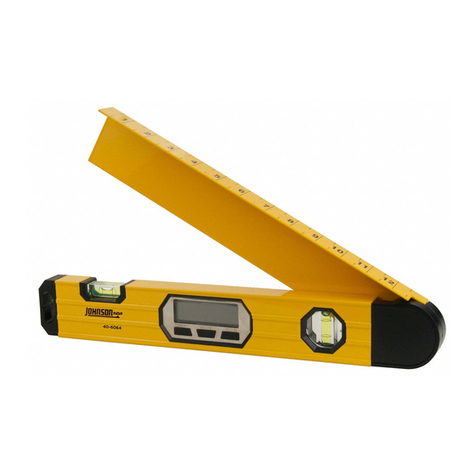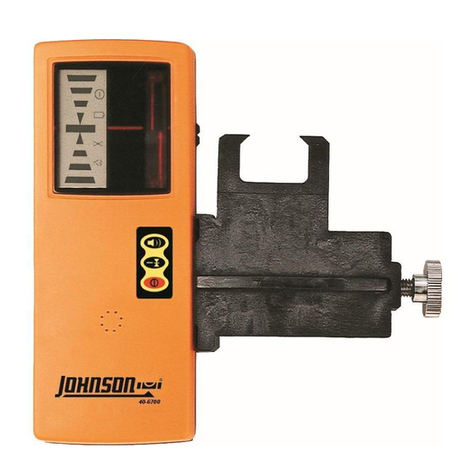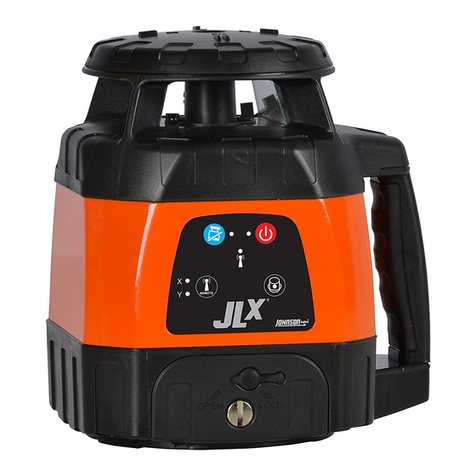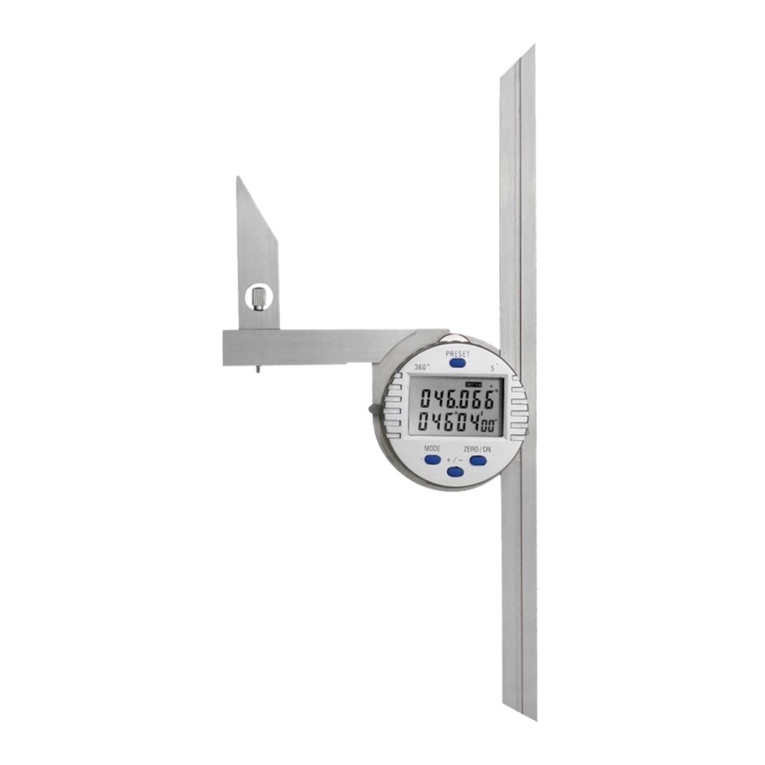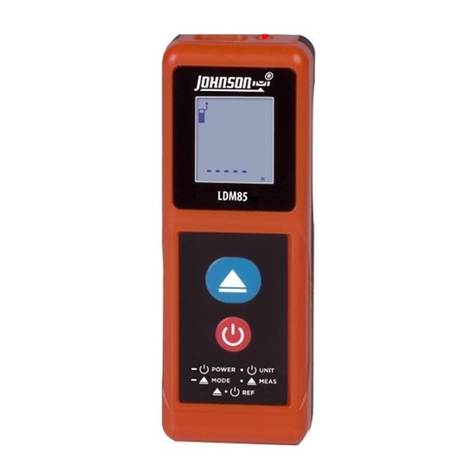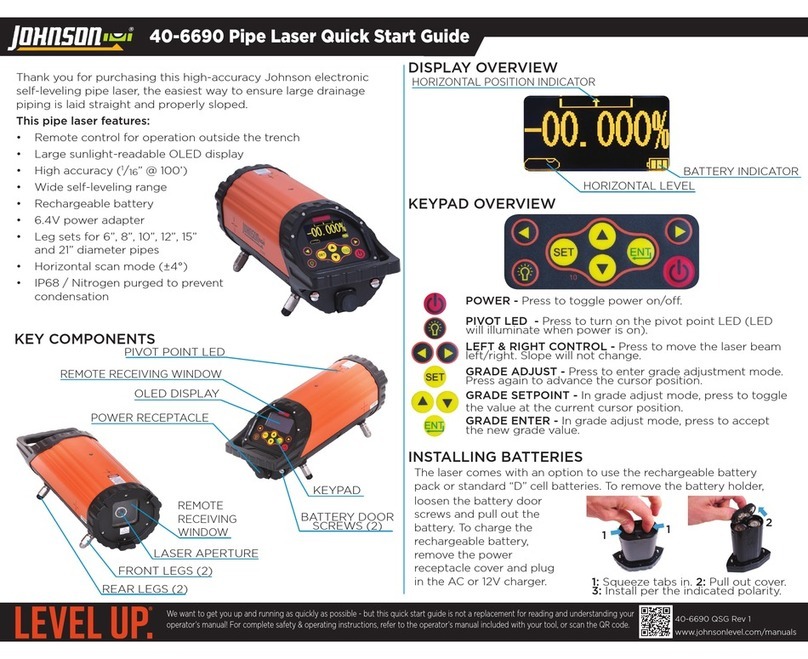
Download this manual at
www.johnsonlevel.com/manuals
40-6676
40-6676 Self-Leveling 360° Laser with
Plumb Line Operator’s Manual
Johnson Level & Tool oers a three-year limited
warranty on this product. You can obtain a copy
of this warranty on our website. The limited
warranty contains various limitations and
exclusions.
Note: The user is responsible for verifying proper
calibration of this instrument before each use.
If you experience problems with this product,
please contact us.
In the USA:
service@johnsonlevel.com
888-953-8357
In Canada:
800-346-6682
On the Web:
www.johnsonlevel.com
Please register your product within 30 days.
Registration ensures you can obtain warranty
service even if you lose your receipt, or so we
can contact you if there is ever a product recall.
We will never share your information!
Scan or click:
www.johnsonlevel.com/register
Laser
Class II, <1mW, 515nm
Accuracy +/- 3/16" @ 50’
Operating Range Up to 200’
Self-Leveling
Range +/- 2.5°
Operating
Temperature 14°F to 113°F
Batteries Li-Ion (included) or
4 AA (not included)
Battery Life 7 hours
Dimensions 4.25" x 2.25" x 4.8"
Weight (laser) 1lb 5oz (with batteries)
IP Rating IP54 (rainproof)
Tool does not power on or remain on
• Check battery polarity.
• Replace batteries.
• Ensure battery door is tight.
• Turn pendulum lock o, then on.
• Ensure the tool is within its self-leveling
range.
Laser light is dim
• Ensure fresh batteries are being used or the
Li-Ion battery pack is fully charged.
• Ensure laser is within operating temperature
range.
• Ensure battery door is secure.
• Ensure laser is within self-leveling range.
Laser appears out of calibration
• Ensure pendulum is in the unlocked position.
• Has the laser been dropped or subjected to
impact? It may need calibration.
• Contact Johnson Level & Tool for calibration
service. The laser does not contain any user-
serviceable parts.
Note: Do not disassemble; removal of any labels
will void your warranty.
•Read all operating instructions prior to use.
•Power on the laser by unlocking the pendulum
lock.
•Activate/disable the horizontal beam by pressing
. Activate/disable the vertical beam by
pressing .
•To use a detector (not included), activate pulse
mode by pressing . The PULSE LED will
illuminate.
•To operate the laser in manual mode (non self-
leveling), keep the pendulum locked and press
to enter manual mode, then use and to
power on the desired beams. The MANUAL LED
will blink to indicate manual mode is engaged.
• If the laser is in self-leveling mode and is not
able to self-level, both laser beams will flash and
the unit will beep to alert you that it is out of
level.
•If the battery is running low, the low battery
indicator LED will flash. A solid red battery
indicator indicates there is adequate battery life
remaining.
•Store the tool in its case with the pendulum
locked. For extended storage (>3 months),
remove the batteries to prevent corrosion.
•Set the laser on a tripod 10’ from all walls.
•Make a horizontal mark on the wall anywhere
along the 360° line to indicate the height of
the beam. Label this as Point A.
•Turn the laser 90° and mark Point B on the
same spot on the wall as Point A where the
beam intersects. This mark should either be
directly above, below or on top of Point A.
•Repeat Step 3 twice more, labeling the marks
as Point C and Point D, respectively.
•Measure the greatest vertical distance (H)
between any two of the points A, B, C & D.
•If ‘H’ < 1/16” for walls 10’ away from the tool,
the accuracy of the instrument is within its
specifications and no calibration is necessary. If
calibration is required, please contact Johnson
Level & Tool to obtain service at the address to
the bottom right.
•Place the laser on the floor 10’ from a doorway.
Project the plumb beam through the doorway.
•Mark the beam on the floor near the tool as
Point 1. Mark a spot 20’ away as Point 2.
•Mark the beam directly under the doorway as
Point C. Mark the beam on the doorway as D.
•Move the laser to Point 2, and aim the plumb
beam directly through Point 1 and Point C.
•Mark on the doorway Point E.
•Measure the distance
between Point D and
Point E.
•If this distance is less
than 1/16” for a 7’ high
doorway, then the tool
is properly calibrated.
REGISTRATION
TROUBLESHOOTING
CHECKING VERTICAL ACCURACY
CHECKING HORIZONTAL ACCURACY
BASIC OPERATION
WARRANTY
SPECIFICATIONS
